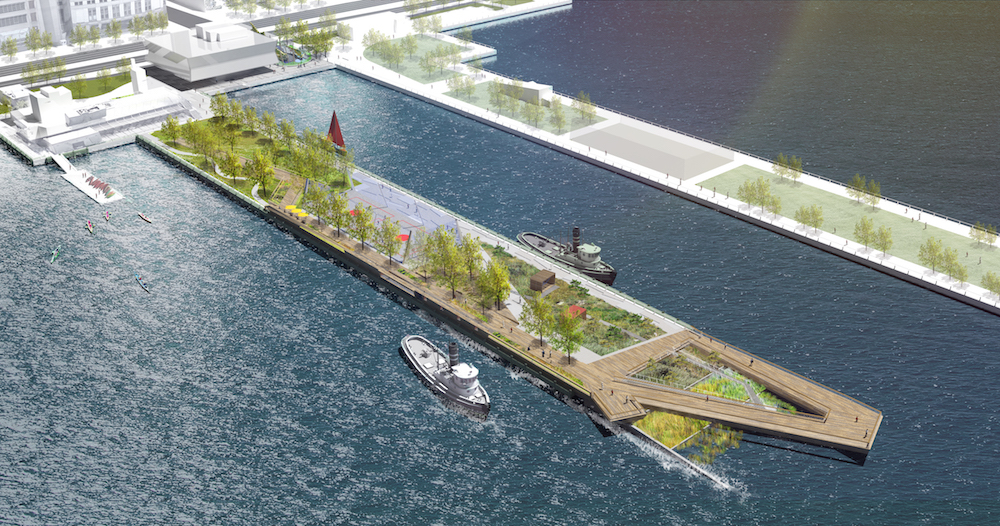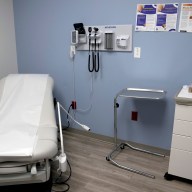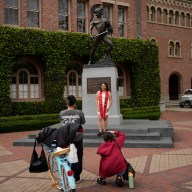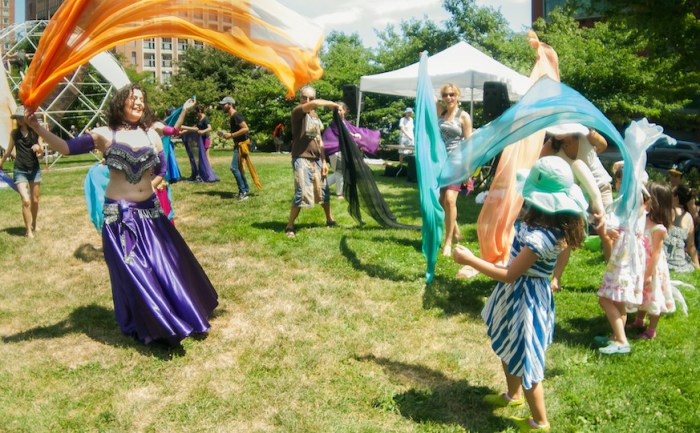In the past 20 years, Hudson River Park has undergone a transformation, but it’s not finished just yet.
What was once parking lots, decaying piers and the plans for an interstate highway alongside the Manhattan waterfront has turned into 550 acres of public space for New Yorkers and an estuarine sanctuary meant to protect the 400 acres of water within the park’s boundaries.
While Hudson River Park Trust, which was created to design, build and maintain the park, had a busy 2018, the near year is expected to bring even more to the waterfront, said Noreen Doyle, Trust executive vice president.
In 2019, the Trust will be busy working on Pier 26 in Tribeca. Though it’ll be the next public park for the Hudson River Park system to come online, it won’t be open until 2020.
That pier will bring a wetland tidal pool for educational activities, two junior soccer fields, a forest canopy of indigenous trees and a playground meant to be both fun and functional, as it will serve as a space to learn about endangered species.
“We are excited because Pier 26 brings both the public recreation and also environmental component of our mission together,” Doyle said. “People will be able to actually get close to the water, learn about the organisms that live in it and how the Hudson River influences our lives as a city and is important for the habitat that lives there.”

Pier 26 rendering. Hudson River Park Trust
Hudson River Park wants to be the site of more scientific initiatives, according to Doyle. The Trust hopes to expand on a pilot project that began in 2018 called environmental DNA, or eDNA.
“Believe it or not, it’s possible to look at water samples and study them to look at what kind of fish moved through [the area],” said Doyle. “We’re partnering with research institutions that can help us look at how to do this in a methodical way.”
The park will also expand its plastics initiative, meant to reduce the amount of both microplastics and macroplastics polluting the environment. In 2018, the Trust removed about 1,000 pounds of macroplastics from the park.
“It’s to try to deal with what’s really the 21st century scourge on the global environment,” said Doyle. “And we are going to continue to do more education to expand our composting initiatives and other things to keep the park more and more beautiful every year.”
More Hudson River Park construction in the works
The Trust is also at the beginning stages of designing two new sections of Hudson River Park. These sections, which have not yet been constructed as “public park.” will be turned into community space for the first time: Pier 97 at 57th Street and the Gansevoort Peninsula, which is opposite of the Meatpacking District.
New Yorkers recently submitted some ideas at two recent community meetings for what kind of park they want to see at Pier 97 and the Trust will advance that area’s design in 2019.
For the Gansevoort Peninsula, off of Pier 52, park officials are still in the process of finding a designer, and once one is onboard in 2019, the plans to turn that 5.5 acre plot into public park space will commence.
Construction will also continue on Pier 55, a project that will “revitalize” part of Hudson River Park with almost three acres of new park space. Pier 55 is slated to open in spring of 2021 and promise to be an “iconic new landmark” with a waterfront amphitheatre and public art installations alongside more than 100 species of trees.


















